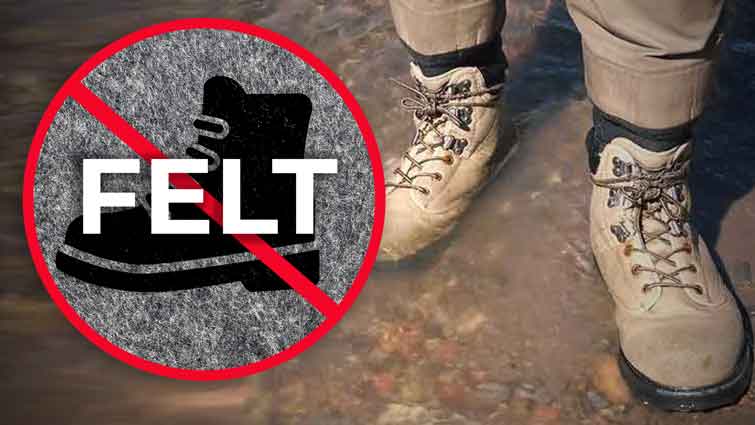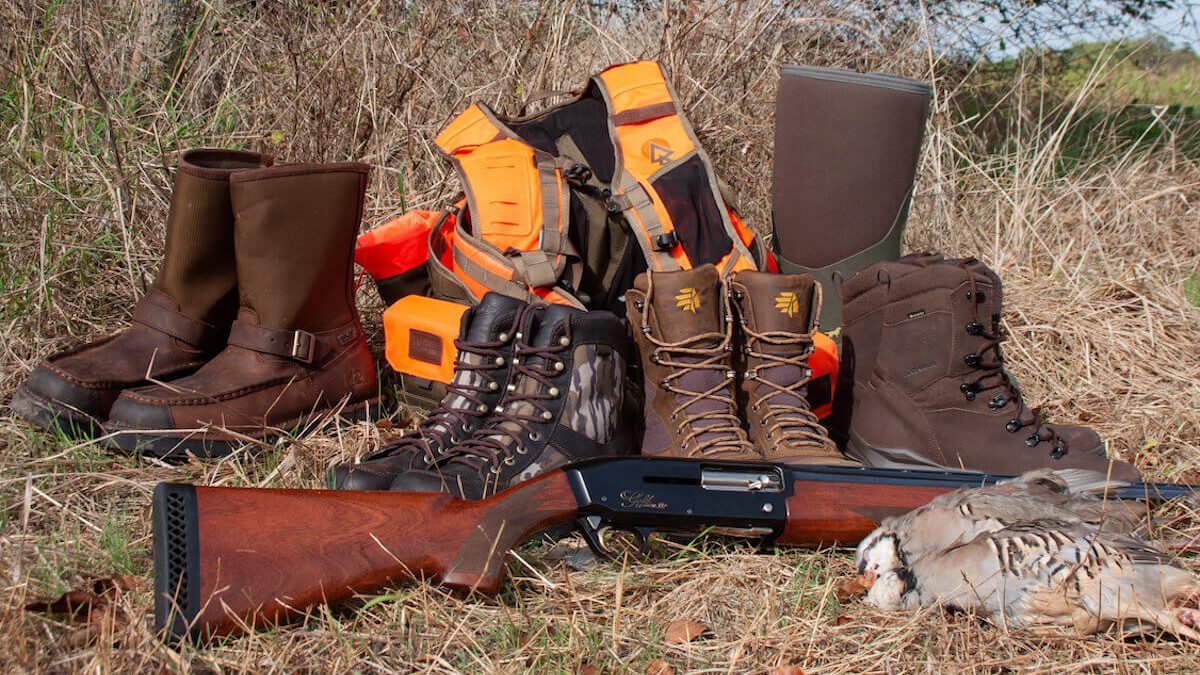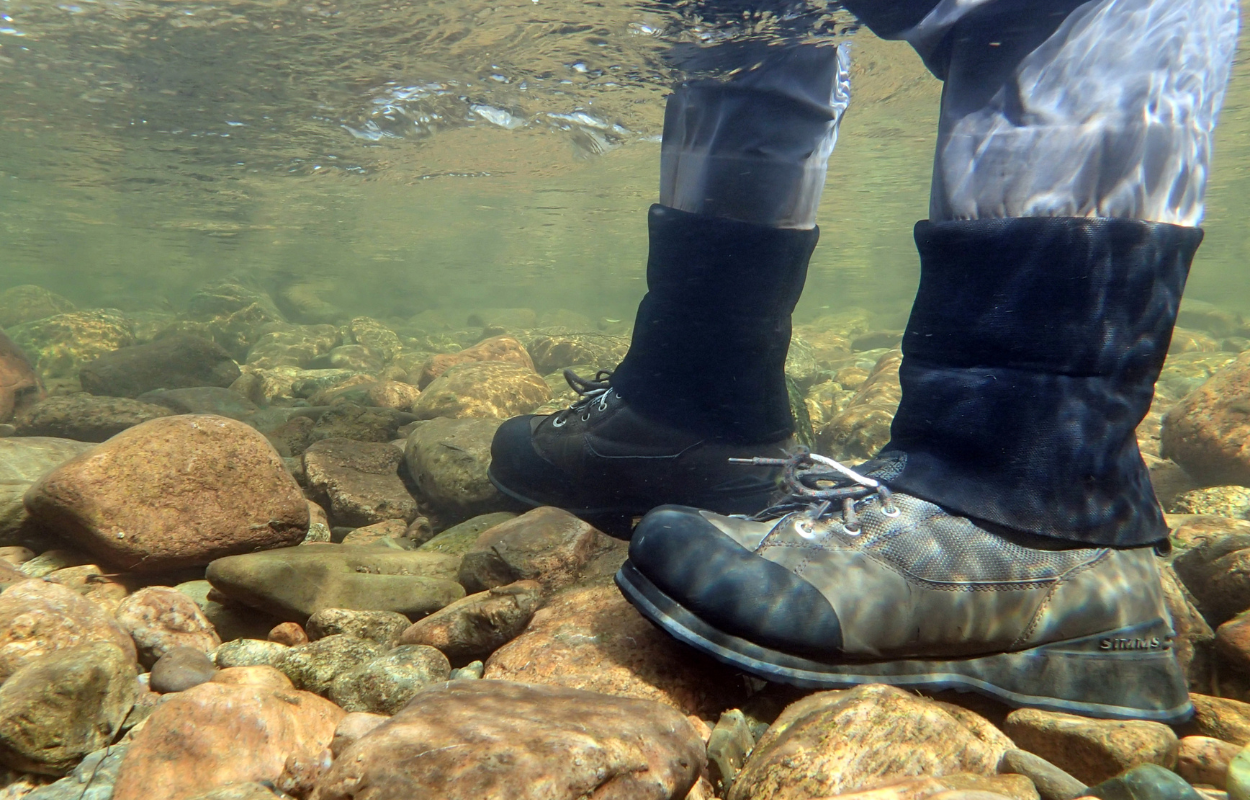Have you ever wondered why felts are outlawed in hunting boots?
Hunting enthusiasts often debate the effectiveness and safety of various materials used in their gear. Once a popular choice for their insulation and traction properties, Felts have faced scrutiny and even prohibition in certain hunting areas.
Understanding the reasons behind this decision involves examining environmental impact, invasive species concerns, and overall conservation efforts.
Let’s explore why felts have been phased out of many hunting boot designs and what implications this has for hunters.
What are waders and boots with felt soles?
Felt-soled waders and boots are specialized gear anglers, mainly fly fishermen, used to wade in rivers and streams. These waders are typically made of waterproof materials like neoprene or breathable fabrics like Gore-Tex, and they extend from the angler’s feet to the chest, providing water protection while allowing for mobility and flexibility while fishing.
The soles are what set felt-soled waders and boots apart. Rather than rubber or other materials, the soles of these boots are covered with felt. Felt is a soft and fibrous material that offers excellent traction on slippery rocks and riverbeds., allowing anglers to move through water without slipping or losing footing.
However, felt-soled waders and boots have been controversial recently due to concerns about their ability to spread invasive species. Felt can trap organisms and help them move from one body of water to another, potentially causing ecological damage.
As a result, some areas have prohibited or restricted the use of felt-soled footwear in favour of other materials, such as rubber.
What makes felt-soled waders unsafe for transporting Aquatic Invasive Species?
Felt is a porous material capable of trapping tiny organisms such as microscopic plant fragments, algae, invertebrates, and even fish eggs. These organisms can live in the felt for long periods, surviving outside their natural environment.

Felt is difficult to thoroughly clean. Even after rinsing or washing, tiny organisms may become lodged within the fibres of the felt sole. This makes it difficult to prevent the spread of AIS from one water body to another.
Adequate Habitat for AIS:
Felt-soled waders provide an ideal environment for AIS to survive and thrive. The damp, dark environment between the felt fibres can provide the protection and moisture required for invasive species to survive during transportation.
Easy Transfer:
As anglers move between different bodies of water, whether from one river to another or a river to a lake, AIS trapped in the felt sole can quickly transfer from one ecosystem to another. This can spread invasive species into previously unaffected habitats, disrupting native ecosystems and endangering native species.
Due to these risks, many environmental agencies and organizations have advocated for the abolition of felt-soled waders and boots and the implementation of regulations requiring thorough cleaning and drying procedures to prevent the spread of AIS.
Alternative materials like rubber-soled waders and boots have become popular because they are easier to clean and less likely to harbour invasive species.
Regulatory classification
The regulatory classification of felt-soled waders and boots varies by region and specific concerns about aquatic invasive species (AIS).
However, in many areas, regulations were implemented for felt-soled waders and boots to prevent the spread of AIS. Here are several examples:
Bans or Restrictions:
Some regions have outright prohibited or restricted the use of felt-soled waders and boots in certain waters. These bans may apply to specific bodies of water or areas vulnerable to AIS.
Cleaning Requirements:

In areas where felt-soled waders and boots are still permitted, regulations frequently require anglers to thoroughly clean and disinfect their equipment before moving between water bodies. This is intended to reduce the risk of AIS transmission from one location to another.
Education and Outreach:
Regulatory agencies may also prioritize education and outreach efforts to inform anglers about the risks associated with felt-soled waders and boots and the importance of preventing the spread of AIS. This may include providing information on alternative footwear options and proper cleaning techniques.
Research and Monitoring:
Some regions run ongoing research programs to evaluate the effectiveness of regulations and better understand the impact of felt-soled waders and boots on AIS transmission. This information influences future regulatory decisions and management strategies.
How can we help?
- Use waders and boots without felt soles.
- Try some new slip-resistant alternatives to felt – ask retailers for the most recent options. New types of waders and boots with rubber soles or studs provide full underwater traction.
- Always keep your waders and boots clean and dry—each use.
- Replace the felt soles with slip-resistant alternatives.
- Alter your felt soles to prevent invasive species movement.
- If you must use felt-soled waders, designate them to a single body of water.
- Feel-soled waders should be thoroughly cleaned and dried for at least two weeks before being reused in another body of water or frozen for 24 hours.
- Always inspect and dry your waders, boots, and gear.
FAQs
- Why are felt-soled waders and boots outlawed in certain hunting areas?
Felt-soled waders and boots have been prohibited in some hunting areas due to concerns about their role in spreading invasive species, which poses ecological risks to native habitats.
- What makes felt-soled waders unsafe for transporting Aquatic Invasive Species (AIS)?
Felt’s porous nature traps tiny organisms, making cleaning difficult. This provides an ideal environment for AIS survival and facilitates their easy transfer between different bodies of water by anglers.
- How are felt-soled waders regulated in different regions?
Regulations vary by region but often include bans or restrictions on their use in vulnerable waters, cleaning requirements, educational outreach, and ongoing research and monitoring efforts to manage AIS transmission.
- What are some alternatives to felt-soled waders and boots?
Anglers can opt for slip-resistant alternatives such as waders and boots with rubber soles or studs, which provide traction without the risk of AIS transmission. These alternatives are increasingly available in the market.
- How can individuals help to prevent the spread of invasive species?
Individuals can help by using waders and boots without felt soles, properly cleaning and drying gear after each use, replacing felt soles with slip-resistant alternatives, and designating felt-soled gear to a single body of water.
- What precautions should be taken when using felt-soled waders?
If using felt-soled waders, individuals should thoroughly clean and dry them for at least two weeks before using them in another body of water or freezing them for 24 hours. Regular inspection, cleaning, and drying of waders, boots, and gear are also essential to prevent AIS spread.
Conclusion
The debate surrounding the use of felt-soled waders and boots in hunting and fishing revolves around their potential to spread aquatic invasive species (AIS) and the resulting ecological damage. Felt’s ability to trap and transport organisms makes it difficult to mitigate this risk effectively.
As a result, many regions have implemented regulatory measures to either ban or restrict the use of felt-soled footwear, promote alternative materials, and enforce thorough cleaning protocols.
Anglers can contribute to AIS prevention efforts by opting for non-felt alternatives, adhering to cleaning guidelines, and staying informed about the latest slip-resistant technologies.
By taking proactive measures, outdoor enthusiasts can help Ensure the health and integrity of aquatic ecosystems. At the same time, they are enjoying their favourite pastimes responsibly.

